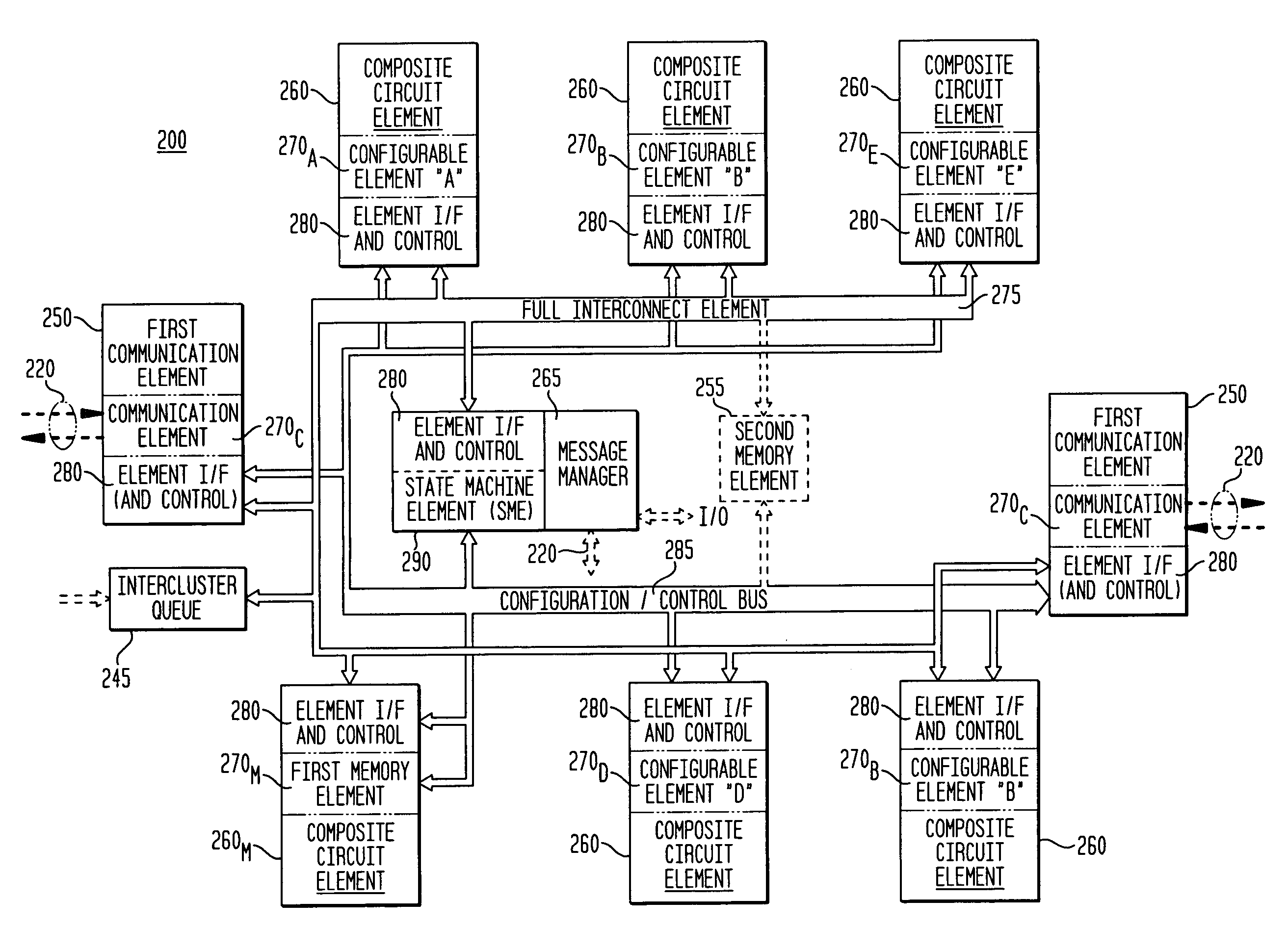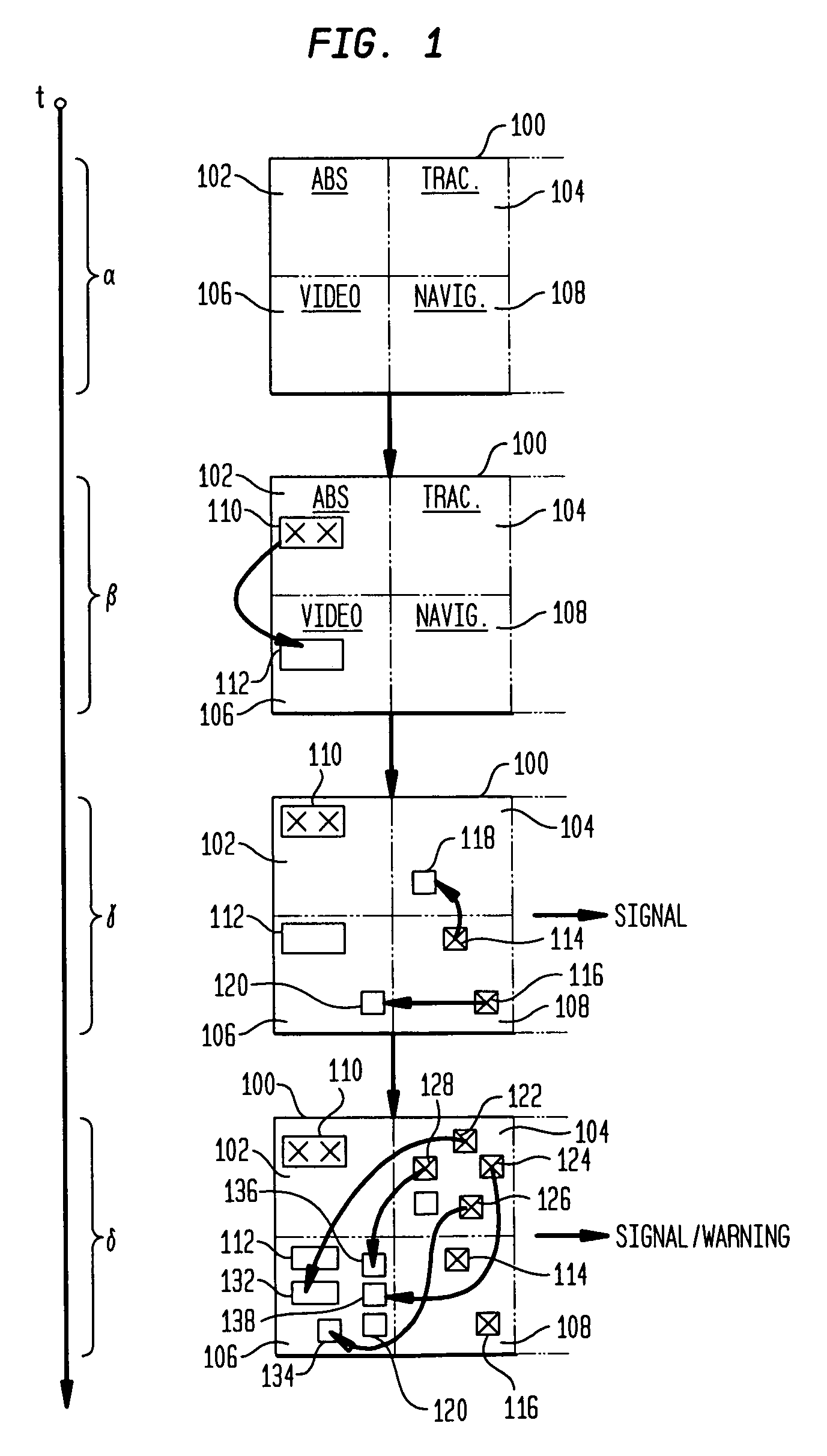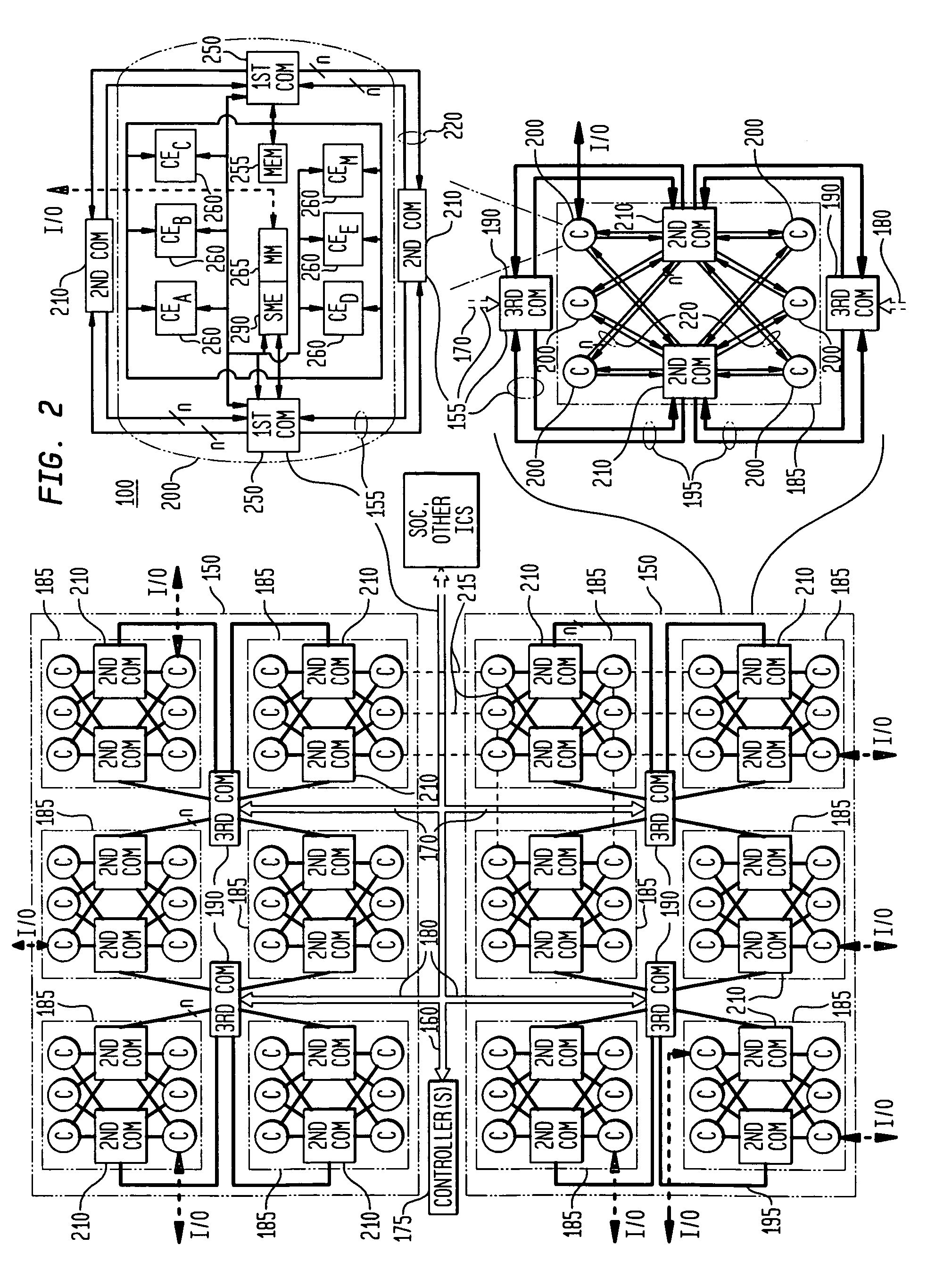Resilient integrated circuit architecture
a technology of integrated circuits and integrated circuits, applied in the field of integrated circuits, can solve the problems of inability to real-time re-configuration for immediate changes in functionality, failure of entire ics, and disabled ic regions, etc., and achieve the effect of significant resiliency
- Summary
- Abstract
- Description
- Claims
- Application Information
AI Technical Summary
Benefits of technology
Problems solved by technology
Method used
Image
Examples
second embodiment
[0075]Each of the apparatuses 100, 140 typically is embodied as an integrated circuit, and may be a separate IC or part of a larger system-on-a-chip (“SOC”) or part of a network of ICs, such as coupled to other ICs on a circuit board, wiring network, network mesh, and so on. The two apparatus embodiments 100, 140 differ only in the location (and / or type) of the components within the various clusters 200 utilized to provide input and output (“I / O”) to other, external or non-integrated ICs or other devices, such as external memory (e.g., DDR-2) or external communication channels or busses (e.g., PCI or PCI-express (PCI-e)). For apparatus 140, such external I / O has been concentrated within a selected matrix 150, while for apparatus 100, such external I / O has been distributed among a plurality of matrices 150. In all other respects, the apparatuses 100, 140 are identical. As a consequence, any reference to apparatus 100 will be understood to mean and include the second embodiment illust...
third embodiment
[0136]FIG. 7 is a block diagram illustrating a third exemplary cluster 200B embodiment in accordance with the teachings of the present invention, as another variation of a cluster 200. In this embodiment, the cluster 200B contains composite circuit elements 260 having communication functionality, such as to provide external communication functionality, e.g., for the communication functionality concentrated within a selected matrix 150 as illustrated in FIG. 3. Also in this embodiment, as an option, the message manager 265 is not utilized for such external communication, which instead is provided within dedicated communication composite circuit elements 260, which may be configurable or nonconfigurable. In this embodiment, each communication composite element 260 is utilized to provide a standard I / O interface for (external) communication to and from the apparatus 100, such as DDR-2 or PCI-e interfaces. In addition, the communication composite elements 260 may have additional input a...
PUM
 Login to View More
Login to View More Abstract
Description
Claims
Application Information
 Login to View More
Login to View More - R&D
- Intellectual Property
- Life Sciences
- Materials
- Tech Scout
- Unparalleled Data Quality
- Higher Quality Content
- 60% Fewer Hallucinations
Browse by: Latest US Patents, China's latest patents, Technical Efficacy Thesaurus, Application Domain, Technology Topic, Popular Technical Reports.
© 2025 PatSnap. All rights reserved.Legal|Privacy policy|Modern Slavery Act Transparency Statement|Sitemap|About US| Contact US: help@patsnap.com



